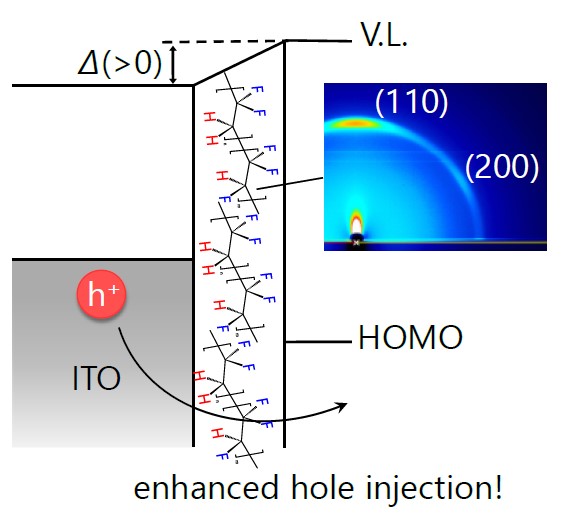-
About
- Kyoto Prize
-
Research Grants
-
Social Contributions
- Events
- News
This website uses cookies to improve the user experience. If you continue on this website, you will provide your consent to our use of cookies.
About
Research Grants
Social Contributions

Assistant Professor, Academic Assembly Faculty of Engineering, University of Toyama *Profile is at the time of the award.
2021Inamori Research GrantsBiology & Life sciences
I think it is interesting to try to control the "conductivity" at the metal/semiconductor interface with an "insulator" called a molecular dipole.
An efficient carrier injection at the electrode/organic semiconductor interface of organic light-emitting diodes (OLEDs) is challenging. It is well-known that an electric dipole at the electrode/semiconductor interface improves the carrier injection from the electrode because of a vacuum-level shift. In this study, poly (vinylidene fluoride-trifluoroethylene) [P(VDF/TrFE)] is used as a polar polymer with spontaneous polarization. P(VDF/TrFE) is spin-coated on an indium tin oxide (ITO) electrode surface as a hole injection layer for OLEDs. The P(VDF/TrFE) layer enhances the hole injection from the ITO electrode by causing a vacuum-level shift. As a result, the device driving voltage can be lowered. In addition, annealing temperature dependence is observed. To investigate the origin of the hole injection effect, the P(VDF/TrFE)-layered ITO surface and the thin film structure of the P(VDF/TrFE) layer are measured. The P(VDF/TrFE) layers at different annealing temperatures show no difference in surface properties but show significant differences in the thin film structure. The hole injection of OLEDs is significantly enhanced because of the structural change in ultrathin P(VDF/TrFE) layer.

Fukazawa, R., Maegawa, Y., Morimoto, M., Matsubara, R., Kubono, A. and Naka, S. (2023), Hole Injection Characteristics and Annealing Temperature Dependence for Organic Light-Emitting Diodes Using Spontaneous Polarization. Phys. Status Solidi A, 220: 2300161. https://doi.org/10.1002/pssa.202300161
Biology & Life sciences
